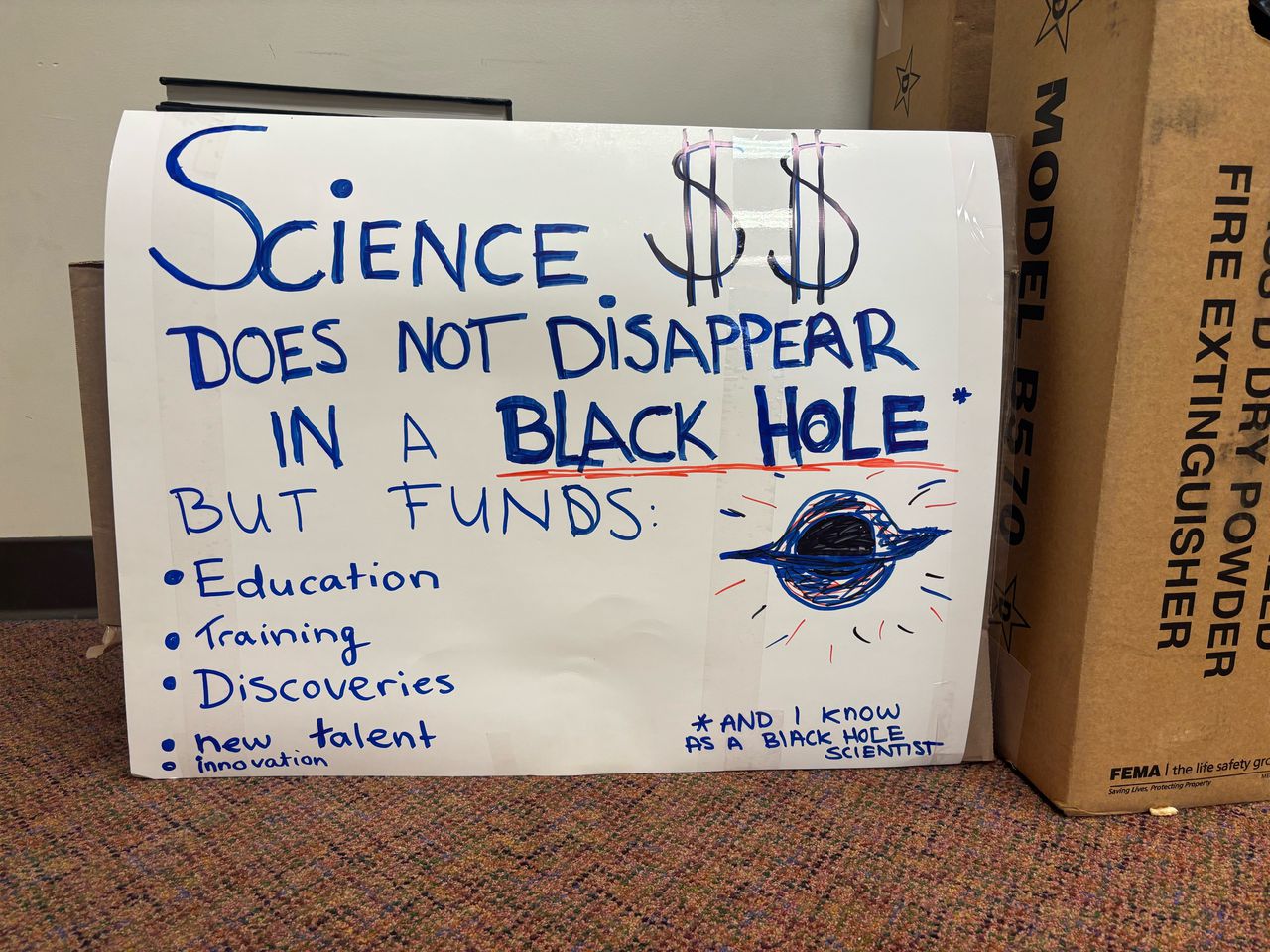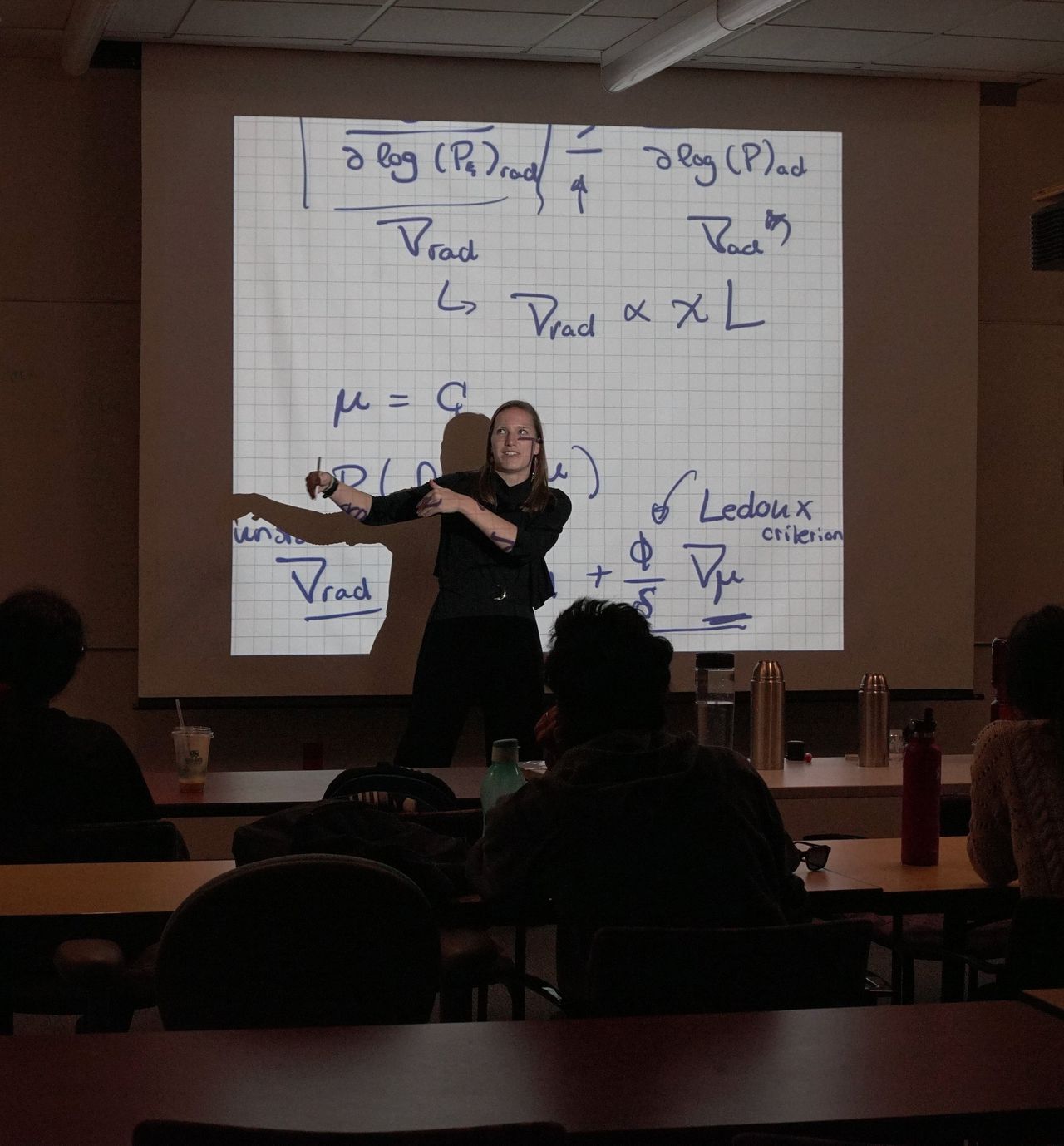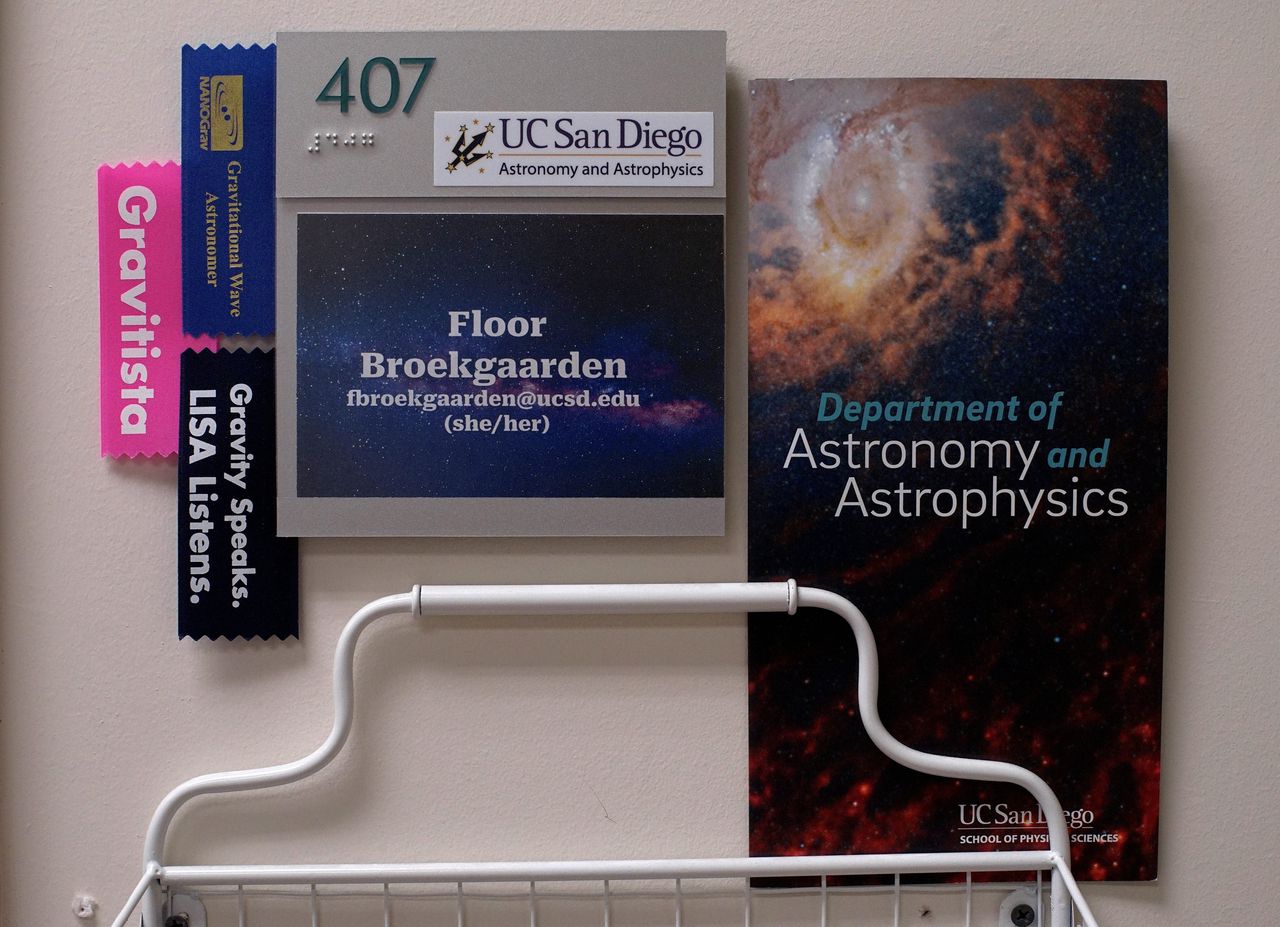The engagement of two black holes can take billions of years – and it always ends with a collision

A protest board behind Floor Broekgaarden shows her involvement: she regularly demonstrates on campus. The reason is the policy of the Trump policy, which wants to shorten universities that do not delete their diversity policy-for Broekgaards University, the University of California, San Diego (UCSD) half the budget is at stake.
Since Broekgaarden (1994) fished out of a book by Stephen Hawking from her father’s bookcase at the age of fifteen, she has been fascinated by black holes. She studied astronomy, physics and mathematics (« I couldn’t choose, » she says in the video call) in Amsterdam, obtained his PhD from Harvard and did research in New York. Since last summer – a year after her promotion – she teaches UCSD. The core of her research: Through clashing black holes, Broekgaarden tries to understand the development of galaxies and the role of heavy stars in it.
What are heavy stars anyway?
« Those are stars with at least ten times the mass of our sun. They are rare – about one in a thousand stars is heavy – and live short: at most ten million years, a thousand times as short as the sun. Yet they have great influence. Their intense radiation and explosive end as a supernova cause new star births. Moreover, heavy elements occur in stars and planets. »
Do we also owe anything to that?
« Certainly. The oxygen that we breathe and the carbon in our body originated in heavy stars. 70 percent of our mass comes from there. The astronomer Carl Sagan said, « We are made of star stuff‘, but actually we are mainly made of Massive Star Stuff. «
As fossils reveal something about dinosaurs, gravitational waves tell us something about disappeared stars
You want to investigate the role of heavy stars in the early universe. How do you study stars that have already disappeared?
« Through their remains: black holes. During a supernova, the core of a heavy star collapses and becomes so close that nothing, even light is not, can still escape out. When two black holes collide, they cause gravitational waves – vibrations in space time – which we can measure here on earth.
« Such collisions occur because heavy stars are usually born in pairs; in some cases, both stars end up as black holes, which keep circling around each other. It is the longest -lasting engagements of the universe: it can take billions of years for the black holes to merge. The collisions that we now observe so strands from stars from the early universe. »
How can you make something of black holes out of the stars from which they emerged from together? Does that information not disappear into the black hole?
« That’s right, but gravitational waves give us traces. I call my research the » paleontology of gravitational waves « : as fossils reveal something about dinosaurs, gravestone waves tell us something about disappeared stars. We make models of how they arise and come together, and in the future the observations, and the observations by the observations and the observations and the observations, and the observations and the observations and the observations and the observations and the observations are by the observations and the observations. Telescope because both black holes and their collisions are rare, we have to do many simulations to draw conclusions. «
Read also
Read also: Measuring gravity waves under South Limburg: the Netherlands, Belgium and Germany want to build the Einstein Telescope
What did you go to the US?
« Among other things, the room for long, risky projects, such as mine. In the US, the PhD process takes longer than in Europe, that gives more freedom. Moreover, there are more sources of financing, including fairs for adventurous proposals that have been rejected earlier. That shows the culture here: growth is stimulated, even if you do not immediately fit in the perfect picture. »
This also applied to yourself?
« During my studies I was bothered by the scammers syndrome – the feeling that I actually didn’t belong there. I thought you had to be a sort of Einstein from day one. As a woman, I often got the ‘organizing’ role in group work, which made me uncertain – it felt like my substantive input did not matter. I sometimes did not even make a practice of the Netherlands. Curriculum recognized my doubts.
Do you still have problems with that scammers’ syndrome?
« Yes, haha, but I deal with it better. In San Diego it played again – I set the bar high, and a rejection, for example for a stock market application, feels quickly as failure. But now I know: there is no manual for this work, so that kind of thoughts are meaningless. »


Photos Peggy Peattie
You are committed to diversity and inclusion – your promotion supervisor called you « a dedicated citizen or astronomy ». How do you deal with your own unconscious prejudices when selecting new people?
« I try to actively reduce them. For example, I never look at grade lists – they say little about potential. Students from less privileged environments or with feelings of scammers often perform worse, not due to a lack of talent, but due to lack of support or examples. In conversations, I prefer to pay attention to motivation and ideas. If you believe in someone, you often see that person blames. »
Your enthusiasm is contagious. But the government seems to have less confidence: the academic freedom and inclusion programs are under pressure. How do you keep those two worlds in balance?
« It feels incredibly double. Yesterday I became enthusiastic about a great result of a PhD student; this morning I heard that the government wants to scrap research financing. Especially international students feel that uncertainty. I want to offer them every opportunity, but I can not always say that with full conviction. »
Is your American dream shattering with the arrival of Trump? ”
Broekgaarden is sighing.
« It’s difficult. I miss my family, my sister is getting married and gets a baby. But if I go to the Netherlands now, I risk that I am not allowed to go back to the US. Then I put my career and relationship here at stake. That gnaws. »
/s3/static.nrc.nl/wp-content/uploads/2025/05/08131304/data131526565-19e83c.jpg)

:format(webp)/s3/static.nrc.nl/images/gn4/stripped/data102641950-2ad0ee.jpg)
:format(jpeg):fill(f8f8f8,true)/s3/static.nrc.nl/taxonomy/bf9b707-commentaar-itemafbeelding-2024.png)
/s3/static.nrc.nl/images/gn4/data131663875-35367c.jpg)
/s3/static.nrc.nl/wp-content/uploads/2025/05/12011045/ANP-356835337.jpg)


